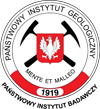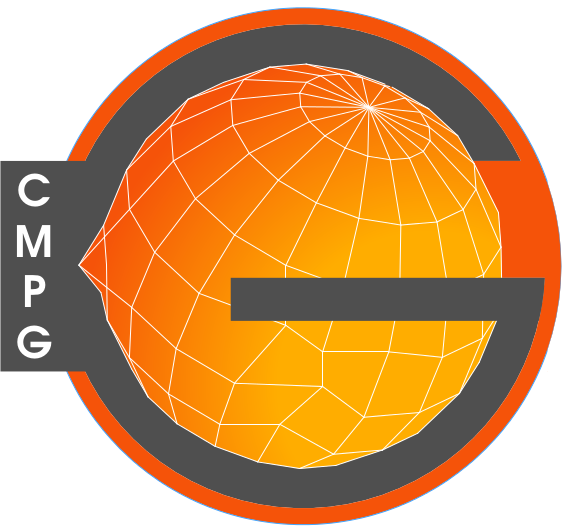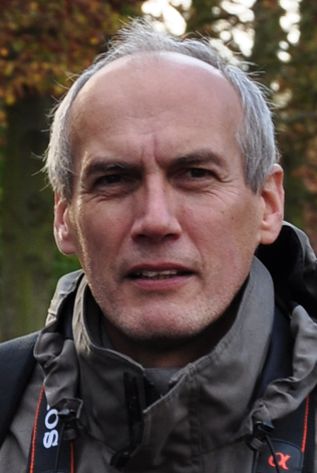Profesura: Decyzją Prezydenta RP z dnia 29 lutego 2024 r. otrzymał tytuł profesora.
Habilitacja: 2008 r., Państwowy Instytut Geologiczny - PIB
Tytuł osiągnięcia habilitacyjnego: Badania współczesnej geodynamiki litosfery na obszarze Polski
Doktorat: 1998 r., Państwowy Instytut Geologiczny - PIB
Praca doktorska: Badania naprężeń skorupy ziemskiej in situ w głębokich otworach wiertniczych w Polsce
Magisterium: 1984 r., Wydział Geologii, Uniwersytet Warszawski
Praca magisterska: Budowa geologiczna okolic Frampola na Roztoczu Lubelskim
E-mail: marek.jarosinski(at)pgi.gov.pl
Tel.: 22 45 92 554
Doświadczenia naukowe:
-
Badania tektoniczne kompleksów osadowych w odsłonięciach, na rdzeniach wiertniczych i na podstawie danych geofizycznych.
-
Analiza współczesnej geodynamiki, w tym wyznaczanie kierunków i tensora naprężeń na podstawie geofizyki otworowej i testów szczelinowania hydraulicznego.
-
Kompleksowa interpretacja tektoniczna danych geologicznych i geofizycznych (sejsmika, profilowanie upadomierza, pola potencjalne).
-
Modelowanie temperatury i wytrzymałości litosfery metodami analitycznymi.Modelowanie naprężeń i deformacji litosfery metodą elementów skończonych.
-
Rozwój geodezyjnych metod wyznaczania współczesnych odkształceń skorupy ziemskiej.
-
Analiza struktur geologicznych i ich geodynamiki pod kątem ich przydatności do magazynowania, weglowodorów, składowania CO2 i odpadów promieniotwórczych.
-
Analiza danych strukturalnych i geomechanicznych pod kątem doboru optymalnych sposobów eksploatacji węglowodorów.
-
Ocena istotności czynnika geodynamicznego w procesie lokalizacji elektrowni jądrowej.
Publikacje: autor 90 publikacji recenzowanych, w tym:
- Jarosiński M., Pachytel R., Dzikowski M., 2024. Multiple friction tests under low load conditions: application to planar fractures in shale reservoir. Geological Quarterly 68
- Jarosiński M., Bobek K. Poprawa P., 2025. Volumetric effects of decompression following natural hydraulic fracturing in shale during expulsion of hydrocarbons: the case of the Baltic Basin (Northern Poland). AAPG Bulletin v. 109 (2): 243–269
- Głuszyński A., Jarosiński M., Dąbrowski M., Peryt T., 2024. Giant polygonal anhydrite ridges in the Southern Permian Basin. Geology, v. 53, p. 109–113
- Jarosiński M., Bobek K., Wojtowicz M., Wyglądała M., Kępiński M., 2024. Are the Carpathians tectonically active?: Geomechanical study in deep boreholes in the outer Carpathians (Poland), Geomechanical study in deep boreholes in the outer Carpathians (Poland). Tectonophysics, 890, 230505
- Jarosiński M., Bobek K., Wojtowicz M., Pachytel R., Trzeciak M, Piłacik A., 2024. Present-day stress stratification in the lower Palaeozoic shale sequence of the Baltic Basin, northern Poland, inferred from borehole data. Tectonophysics, 890, 230484
- Jarosiński, M., Bobek, K., Wojtowicz, M., Wyglądała, M., Kępiński, M., 2023. What Can be Learned from a 1D Mechanical Earth Model with Variable Elastic Strain?. Book of abstracts from Fifth EAGE Conference on Petroleum Geostatistics, 27-30.11.2023, Porto, Portugal
- Jarosiński M., Bobek K., Głuszyński A., Sowiżdżał K., Słoczyński T., 2023. Fracture stratigraphy, stress and strain evolution in shale succession of the Lower Paleozoic Baltic Basin (Poland). AAPG Bulletin, 107 (11): 1851–1881
- Jarosiński M., Krzyścin J., Ustrnul Z., Kochanek K., Janik T., 2023. Badania geofizyczne w rozwiązywaniu problemów cywilizacyjnych istotnych dla Polski. Przegląd Geologiczny, vol. 71 (8): 418-429
- Jarosiński M., Araszkiewicz A., Bobek K., Gogołek T., 2022 Contemporary state of stress in a stable plate interior (northern Poland): The integration of satellite geodesy, borehole and seismological data. Tectonophysics 831, 229336
- Bobek K., Konieczyńska M., Jarosiński M., 2021. Tectonics of the Wysoka Kamieńska Graben (NW Poland) and implications for fault sealing potential. Geological Quarterly, 65: 38.
- Wojtowicz M., Jarosiński M., Pachytel R., 2021. Unconfined compressive strength of the Lower Paleozoic shales from the Baltic Basin (northern Poland). Geological Quarterly, 65, No 2 (2021) 65: 33
- Wójcicki A., Jarosiński M., Roman M.G., 2021. The estimation of CO2 storage potential of a gas-bearing shale succession at the early stage of reservoir characterization: a case study from the Baltic Basin (Poland). Geological Quarterly, 65: 3
- Bobek K., Jarosiński M., 2021. Modifications of methods for the fracture analysis from borehole data in application to shale formations. Geological Quarterly, 65: 23
-
Olkowicz, M., Bobek, K., Jarosiński, M., & Pachytel, R. 2021. Comparison of joint sets orientation in the Lower Paleozoic shales exposed in Scania (SW Sweden) and concealed in N Poland: a multi-methodological approach. Geological Quarterly, 65(4), 65-63
-
Piłacik A, Jarosiński M., 2021. Present-day stress profile in the Baltic Basin sedimentary succession constrained by drilling-induced structures: interpretation uncertainties. Geological Quarterly, 65: 51 DOI: http://dx.doi.org/10.7306/gq.1620
-
Trzeciak, M., Dabrowski, M., Jarosiński M., 2019. Stress distribution models in layered, viscoelastic sedimentary basins under tectonic and glacial loads. Geophys. J. Int., accepted.
-
Wojtowicz, M., Jarosiński, M., 2019. Reconstructing the mechanical parameters of a transversely-isotropic rock based on log and incomplete core data integration. International Journal of Rock Mechanics and Mining Sciences, 115: 111–120.
- Szymczak P. Kwiatkowski, K., Jarosiński, M., Kwiatkowski, K., 2019. Wormhole formation during acidization of calcite-cemented fractures in shales. SPE Journal, 24 (2): 1-16.
-
Bobek K., Jarosiński M., 2018, Parallel structural interpretation of drill cores and microresistivity scanner images from gas-bearing shale (Baltic Basin, Poland), Interpretation
-
Gajek W., Trojanowski J., Malinowski M. and Jarosiński M., 2018 Results of downhole microseismic monitoring at a hydraulic fracturing site in Poland, Part 1: Events location and stimulation performance. Interpretation, vol. 6 (3): SH39-SH48
-
Bobek, K., Jarosiński M. and Pachytel R. 2017. Tectonic structures in shale that you do not include in your reservoir model. American Rock Mechanics Assoc. Publ. 17-79.
-
Pachytel R., Jarosiński M. and Bobek, K., 2017. Geomechanical stratification in a shale reservoir and its correlation with natural fractures: case from Pomeranian Basin (Poland). American Rock Mechanics Assoc. Publ. 17-79.
-
Araszkiewicz, A., Figurski M., Jarosiński M., 2016. Erroneous GNSS Strain Rate Patterns and their Application to Investigate the Tectonic Credibility of GNSS Velocities. Acta Geophysica,57: DOI: 10.1515/acgeo-2016-0057
-
Bogusz J., Kłos A., Figurski M., Jarosiński M., Kontny B., 2013. Investigation of the reliability of local strain analysis by means of the triangle modelling. Acta Geodynamica et Geomaterialia, 10 (3): 93–305.
-
Aagaard P., Balaz P., Cortes V., Hasse H., Holmes J., Huppert H., Jarosinski M., Kalaydjian F., Kaskel S., Laenen B., Lemos de Sousa M., Mazzotti M., Morris J., Niemi A., Swennen R., Tier S., Wiemer S., 2013. Carbon capture and storage in Europe. European Academies Science Advisory Council, Policy Report 20, ISBN: 978-3-8047-3180-6: 1-87.
-
Jarosiński M. 2012. Compressive deformations and stress propagation in intracontinental lithosphere: finite element modeling along the Dinarides-East European Craton profile. Tectonophysics, 526–529: 24–41.
-
Jarosinski, M., Beekman, F., Matenco L., Cloetingh, S., 2011. Mechanics of basin inversion: finite element modelling of the Pannonian Basin System. Tectonophysics, 502: 121-145.
-
Jarosiński M., Poprawa P., Ziegler P. 2009. Cenozoic dynamic evolution of the Polish Platform. Geological Quarterly, 53: 3-26.
-
Reicherter K., Froitzheim, Jarosiński, M., 2008. Alpine tectonics north of the Alps. In: Geology of Central Europe volume 2: Mesozoic and Cenozoic T.McCann (ed.). Geological Society, London, 2008: 1234-1285.
-
Jarosiński M., Kryński J., Rogowski B., 2007. Study of the relationship between the tectonic stress and the deformation of the lithosphere in the territory of Poland – a new geodynamic research project. Reports on Geodesy, 83 (2): 109-116.
-
Narkiewicz M., Jarosiński M., Krzywiec P., Waksmundzka M.I., 2007. Regionalne uwaunkowania rozwoju i inwersji basenu lubelskiego w dewonie i karbonie. Biuletyn PIG, 422: 19-34.
-
Zuchiewicz W., Badura J., Jarosiński M., 2007. Neotectonics of Poland: an overview of active faulting. Studia Quaternaria, 24: 5-20.
-
Jarosiński M., Dąbrowski M., 2006. Modele reologiczne litosfery w poprzek szwu transeuropejskiego w północnej i zachodniej części Polski. Prace PIG, 188: 143-166.
-
Mazur S., Jarosiński M., 2006. Budowa geologiczna głębokiego podłoża platformy paleozoicznej południowo-zachodniej Polski w świetle wyników eksperymentu sejsmicznego POLONAISE'97. Prace PIG, 188: 203-222.
-
Jarosiński M., 2006. Recent tectonic stress field investigations in Poland: a state of the art. Geol. Quarterly, 50: 303-321.
-
Jarosiński M., 2006. Źródła współczesnych naprężeń tektonicznych w Europie Środkowej w świetle modelowań elementami skończonymi. Prz. Geol., 54: 700-709.
-
Jarosiński, M., Beekman, F., Bada, G., Cloetingh, S., 2006. Redistribution of recent collision push and ridge push in Central Europe: insights from FEM modelling. Geophys. J. Int., 167: 860-880.
-
Jarosiński M., 2005. Ongoing tectonic reactivation of the Outer Carpathians and its impact on the foreland: Results of borehole breakout measurements in Poland, Tectonophysics, 410: 189-216
-
Jarosiński M., 2005. Współczesny reżim tektoniczny w Polsce na podstawie analizy testów szczelinowania hydraulicznego ścian otworów wiertniczych. Prz. Geol., 53: 863-872
-
Zuchiewicz, W., Tokarski, A. K., Jarosiński, M. & Márton, E., 2002. Late Miocene to recent-day structural development of the Polish segment of the Outer Carpathians. EGU Stephan Mueller Special Publication Series, 3: 185–202
-
Jarosiński M., 1998. Contemporary stress field distortion in the Polish part of the Western Outer Carpathians and their basement. Tectonophysics, 297: 91-119




